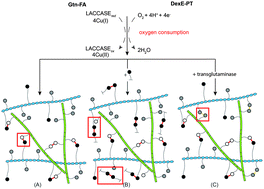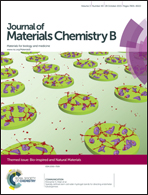Designer hydrogels for precision control of oxygen tension and mechanical properties
Abstract
Oxygen levels and mechanical properties provide vital cues to regulate myriad cellular functions and stem cell fate decisions. Here, we present a hybrid hydrogel system in which we can control independently oxygen levels and mechanical properties. We designed, synthesized and analyzed a hybrid hydrogel system comprised of two polymer backbones, gelatin and dextran. Both polymers were crosslinked via a laccase-mediated, oxygen consuming reaction. By specifically controlling the concentration of phenolic molecules available to react in our hydrogel, we could precisely control the time in which the hydrogel remained hypoxic (TH). We were able to achieve a range of TH from the order of minutes to greater than 10 hours. Additionally, by incorporating a secondary crosslinker, transglutaminase, mechanical properties could be adjusted in a user-defined fashion, with dynamic elastic modulus (G′) values ranging from <20 Pa to >1 kPa. Importantly, oxygen levels and substrate mechanical properties could be individually tuned and decoupled in our hybrid hydrogels, while retaining the potential to study possible synergistic effects between the two parameters. By precisely controlling oxygen tension and mechanical properties, we expect that research utilizing the new hybrid hydrogels will enhance our understanding of the complex 3D cellular processes mediated by each parameter individually and may also hold clinical interest as acellular therapies.

- This article is part of the themed collection: Bio-inspired and natural materials

 Please wait while we load your content...
Please wait while we load your content...